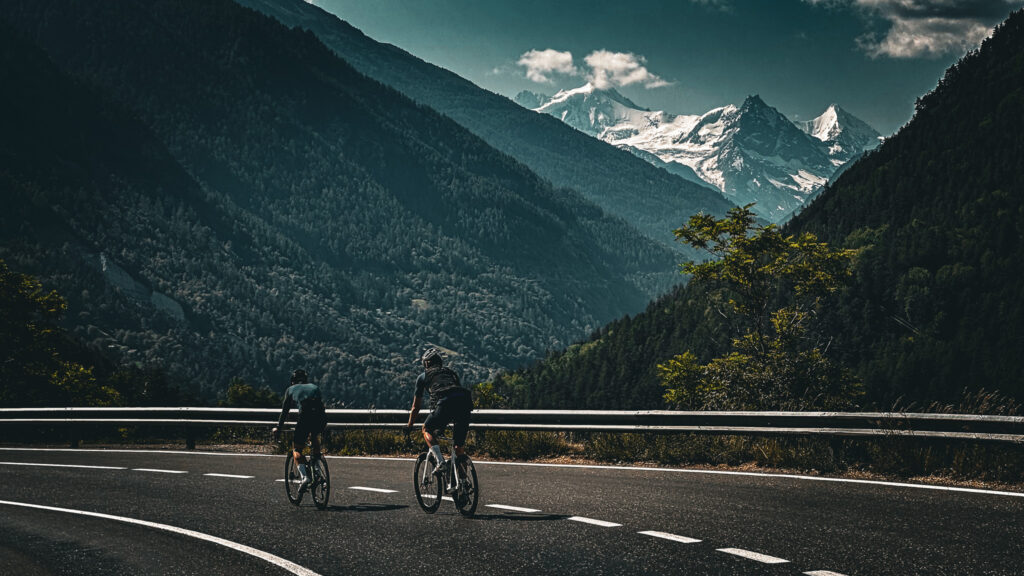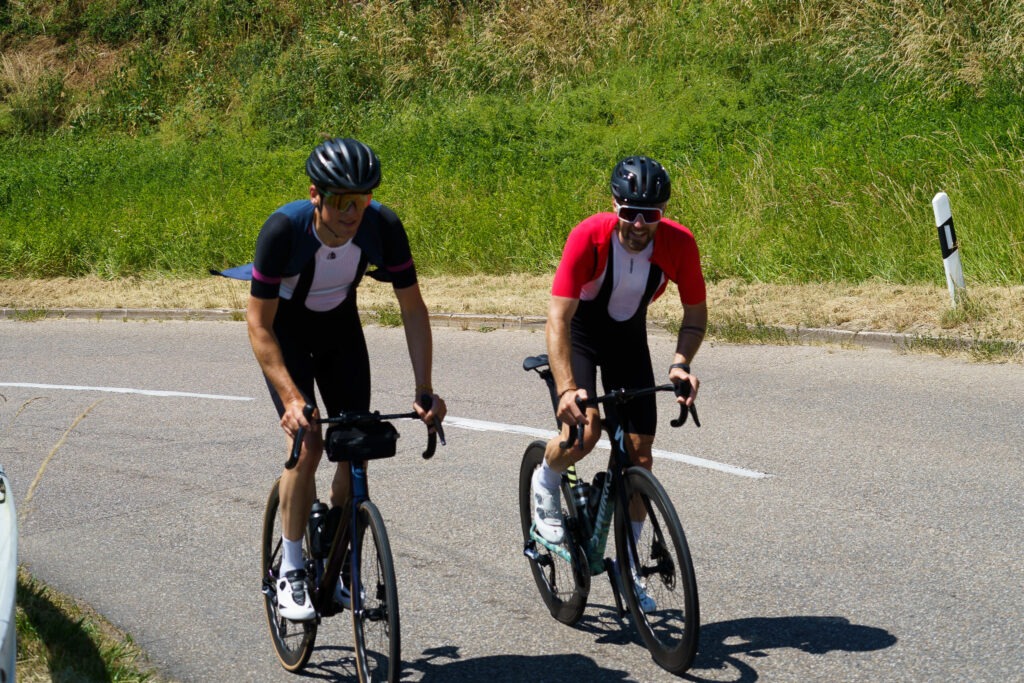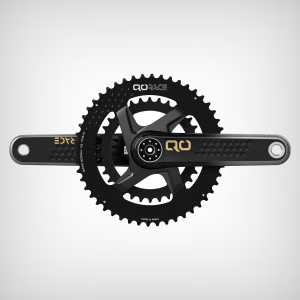For many people, climbing a real mountain is a big dream. But what should you consider if you have never done this before? This article lists the 24 things you should definitely not do to make your climb a success!

1. Going up the mountain without specific training
In the Netherlands, it is very difficult to train for the high mountains, although you can make fine altitude metres around Arnhem, the Veluwe, the Utrechtse Heuvelrug, in certain places on the border with Germany and of course in Limburg, it is wise to cycle up a small one before you cycle up a 'real mountain'. You can do this by booking a cycling holiday in Mallorca, but it is also an option to ride to the Eifel or the Vosges, for example, and prepare yourself there for a weekend by riding up longer climbs. Preparation is half the battle and the advantage of cycling is: the more you do it, the better you get.
2. Going out with too little food and drink
Even if you are going to climb Alpe d'Huez and expect to take 'only' an hour; just take a few bars with you. During a climb, you burn so many calories that you better make sure you have enough supplies. Even if you don't eat during the climb, it is wise to eat something at the top so you can start the descent focused.
3. Maintain different leg speeds
If it's a long climb, it's best to maintain one rhythm as soon as possible. Generally, a leg pace of 90 revolutions per minute is considered normal, but this can vary from person to person. Armstrong had the technique of cycling at a leg pace of above 110, you don't need to copy this as it is difficult, but it does seem to reduce muscle strain.
4. Sitting the whole climb
During the climb it is wise to spend most of the time sitting down, this way you can sustain a hard effort the longest. But if you stand on the pedals, you are able to transfer up to 30% more energy to your pedals and you will be engaging other muscle groups, providing relief to your upper legs. Take care not to cycle too long in the red and blow yourself up. For example, you can strategically place intermediate gears, just before a section of descent or just by standing on a steep section and maintaining your cadence.
5. Standing the whole climb
Fair is fair: Standing climbing looks really cool, but it also takes a huge amount of energy. Most people therefore climb while sitting in the saddle. This way, you sit more calmly on the bike and it is easier to find a balanced cadence.

6. Not wearing a helmet
This goes without saying. Also when climbing the mountain just keep your helmet on.
7. Looking straight ahead all the time
It is not just while descending that it is important to pay attention; While climbing, look ahead carefully, pay attention to the traffic around you and look through the bends. If you are 'in the zone', you may find that you are focused but have very narrow tunnel vision. Professional cyclists ride on a closed course, we cycle on public roads and are therefore part of the traffic. If you don't pay attention for a moment, you can easily ride on the wrong side of the road, where cars and cyclists are coming down at high speed. Try to avoid the tunnel by counting the kilometre signs along the road or focusing on certain benchmarks on the mountain.
8. Mounting Santiago Botero's resistance
My knees hurt when I go to these sculptures by Santiago Botero look, where he cycled up Les Deux Alpes with a huge resistance during the 2002 Tour de France. He may win grandiose, but I am afraid he has had ten knee operations by now. So make sure you have plenty of big cogs at the back. Mentally, it's great if you have a cog left. So be sure to mount a mountain gear. By the way, we do cycle with a double/compact and not a tripple. As a wise man once taught me: a tripple is for a sissy.
9. Getting sewn up by your friend cycling in front of you
It will surely happen that a friend can climb better than you. You can just accept that or train harder to unload him next time.
10. Turn around halfway up the climb
Something very serious must have happened to squeeze the brakes halfway up a climb and head back to your hotel or campsite. Always finish a mountain, even if it takes you the rest of the day. Climbing hurts. Climbing is gruelling. It can be very tempting to just quit, but this is not an option. Finish what you start.
11. Doing the climb without preparation
Always do your homework before climbing a mountain. What will the weather do? How hot/cold will it be at the summit. What oak points are there in the climb? Where is the steepest part? Where can you rest? Where is the most beautiful viewpoint? Is there a place where I can refill my water bottles? Via which road do you go down? Is there a climb in there too? All questions whose answers are very useful and can only help you.
12. Stopping a lot
I am not against stopping during a climb. Everyone cycles at their own level, in my experience it is better to stop for 1 minute to recover and enjoy the view than to insist on continuing. When all is said and done, you will take about the same amount of time on the climb, although you will get to the top fresher with a short stop. Try to keep stopping to a minimum, such as a maximum of once every 10 kilometres. To sprint towards every turn on alpe d'huez and then stop in each of the 21 hairpin bends is no fun.
13. Being afraid to climb
Fear is never a good counsellor and especially not when climbing a mountain on a bicycle. I've seen people cycle up mountains I never thought they could. So a little self-confidence can't hurt! A mountain can instil fear, but if you divide the climb into sections, it is often not so bad.
14. Putting earplugs in your ears
There are three reasons not to put earplugs in your ears: 1. It's dangerous. 2. In the mountains, you have great ambient noise, such as waterfalls, streams and birds. It's a waste not to get those. 3. It's not like Nico Verhoeven is shouting information about the course into your ears, earplugs in your head are therefore completely unnecessary!
15. On the steepest part switch
Always shift gears before a hairpin and not IN the hairpin. Can you see it getting steeper? Anticipate by changing gears more slowly to avoid fiddling with your gearbox during a hard effort.
16. Going up the mountain with a poorly maintained bike
If you don't know exactly how to properly maintain your bike yourself, at least make sure the local bike shop has looked at your bike. I've been stubborn myself on occasion, finding out while climbing that my rear derailleur wasn't getting my chain into the lightest gear. Not so convenient. Not so nice.
17. Wanting to take every inside corner of hairpin bends
Hairpin turns are a curse and a blessing while climbing. They can get you incredibly out of rhythm, but the outside turns can also give your muscles just the relief they need. Plus, from a hairpin, you often have fantastic views over the valley. If you are going to stop, a hairpin is a good time, because besides the view, you can also get back on your bike fairly easily.

18. Climbing with negative thoughts
Self-confidence and positive thoughts are crucial for a good climb. Instead of worrying about the pain and distance, have a nice song, a nice moment or other positive thoughts in your head. Accept that cycling up a mountain is tougher than cycling with the wind in the polder. If you are mentally prepared you will be better able to focus on your goal during the climb: Cycling to the top, preferably as fast as possible.
Underestimating the mountain
A mountain can be deadly. Literally and figuratively. Not to scare you, but yearly hundreds of cyclists fall into a ravine. So a little respect for the mountain can't hurt. As mentioned, it is important to do your homework.
20. Using the wrong cycling position
Avoid 'dragging' while climbing, that's just wasted energy. Try to climb with bent arms as much as possible and keep your hands loosely on the brake levers or the middle of your handlebars. Keep your back straight and make sure you keep enough pressure on your rear wheel on steep sections. This will prevent your rear wheel from slipping. If your cadence goes down because of the gradient, grab in time to downshift.
If you are not comfortable on your bike, it might be useful to get a bikefitting to do.
21. Going up the mountain without a heart rate monitor
As far as I am concerned, it is not a problem that there are cyclists who cycle without technical aids. Fine, but you are missing the most fun part of cycling, after the cycling itself: analysing your rides and seeing where you can improve yourself. As far as I'm concerned, you shouldn't be constantly checking your heart rate while climbing, but with a heart rate monitor you can determine perfectly afterwards at which moments you really went into the red and where there are areas for improvement for the next climb.
22. Driving in red too much
If you already have a heart rate monitor, you can see exactly where and when you go into the red. The longer you use the heart rate monitor, the better you can judge how long you can sustain a certain effort. Usually, your feeling differs a lot from reality. For example, your heart rate may be much higher than you feel, making you think you still have some time left, when at any moment the man with the hammer could come along. Listen to your body and trust your heart rate monitor.
23. Taking too much luggage upstairs
It is not for nothing that there are this kind of picture of Chris Froome existence. It is almost scary to see how thin the climbing goats in the peloton are. Every gram of ballast has to go up with you and causes you to cycle slower. So think carefully about which accessories you all take with you uphill. Don't save on food, drinks and a warm jacket for the descent. For example, think about whether you really need to bring two inner tubes, whether you need arm warmers, whether the rain jacket is necessary, etc. If someone is following you up the mountain with the car, you can drop everything am him or her so you can put on all the warm gear at the summit. That way, you will be better prepared for the (cold) descent.
24. Starting too fast
Should you have ever attended a clinic or even read or heard anything about climbing, this will have been the first piece of advice. Hence, it is at the bottom of this list.





